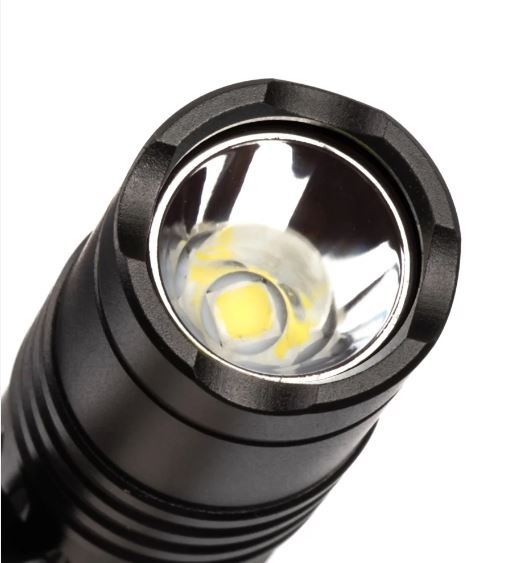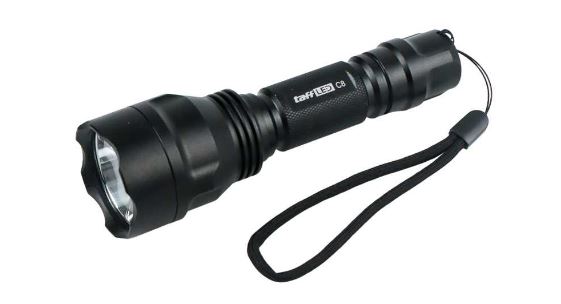LED Flashlights: Lighting the Way of Handheld Lighting
Wiki Article
When it comes to handheld lighting, LED flashlights have arisen as a game-changing technology, innovating the manner we light up our surroundings. These small, yet strong devices have become an essential tool for experts, outdoor enthusiasts, and regular users alike. With their exceptional energy proficiency, resilience, and flexibility, LED flashlights have rapidly surpassed their incandescent counterparts, cementing their position as the future of portable lighting.One of a good product of LED flashlight is Nitecore EDC27 flashlight, it is a compact and powerful everyday carry flashlight, offering a maximum output of 3000 lumens and a range of useful features for various lighting needs.

At the core of an LED flashlight lies the LED, a semiconductor device that converts electricity into light. Compared to traditional incandescent bulbs, which rely on a filament that gets hot to generate light, LEDs produce light through a process called electroluminescence. This key difference in technology is what makes LED flashlights apart from their predecessors, offering many advantages that have made them the chosen choice for numerous applications.
Advantages of LED Flashlights
One of the most significant benefits of LED flashlights is their exceptional energy efficiency. LEDs require significantly less power than incandescent bulbs, allowing them to operate for prolonged periods on a single set of batteries. This efficiency results in extended runtime, making LED flashlights optimal for situations where trustworthy, long-lasting illumination is crucial, such as camping trips, power outages, or emergency situations. Moreover, the reduced power consumption of LEDs means that users can cut costs on replacement batteries, making them an affordable choice in the long run.In addition to their energy efficiency, LED flashlights are renowned for their toughness and strength. Traditional incandescent bulbs are breakable and vulnerable to breakage, especially when under shock or vibration. In contrast, LEDs are solid-state devices with no movable components or sensitive filaments, making them very resistant to impact and vibration. This tough construction allows LED flashlights to endure the demands of outdoor use, including inadvertent drops, bumps, and exposure to extreme weather conditions. Whether you're walking through rugged terrain, working on a construction site, or simply navigating a dark path, an LED flashlight can provide reliable illumination without the concern of abrupt failure.
Another advantage of LED flashlights is their remarkable brightness and beam quality. Improvements in LED technology have led to the creation of high-powered LEDs that can generate bright, focused beams of light. These strong LEDs, combined with carefully designed reflectors and lenses, allow LED flashlights to produce a intense, uniform beam that can illuminate objects at a considerable distance. The ability to emit a powerful, focused beam is particularly valuable in outdoor settings, where users need to detect potential hazards or navigate through dim, new environments. Furthermore, many LED flashlights offer customizable beam patterns, allowing users to switch between a broad flood beam for proximate work and a concentrated spot beam for long-range illumination, providing adaptability for different lighting needs.
The compact size and featherweight design of LED flashlights are also significant advantages over their incandescent counterparts. LEDs are considerably tinier than traditional bulbs, enabling manufacturers to create flashlights that are more portable and easier to carry. This portability is particularly beneficial for specialists who need to transport a flashlight as part of their daily gear, such as law enforcement officers, firefighters, and utility workers. The light nature of LED flashlights also makes them easier to hold and use for lengthy periods, reducing hand fatigue and strain.
In terms of longevity, LED flashlights have an obvious edge over incandescent models. LEDs have a remarkable lifespan, often persisting tens of thousands of hours before requiring replacement. This lengthy lifespan means that users can rely on their LED flashlights for years without the need for frequent bulb changes. On the other hand, incandescent bulbs have a considerably less lifespan, typically persisting only a few hundred hours before dying. The prolonged lifespan of LEDs not only provides simplicity but also contributes to the general economy of LED flashlights, as users can evade the expense and bother of continually replacing bulbs.
Versatility and Applications
The flexibility of LED flashlights surpasses their main function of providing illumination. Many modern LED flashlights come outfitted with supplementary features that improve their functionality and flexibility. Some models include various lighting modes, such as high, mid-level, and low brightness settings, as well as strobe or SOS modes for emergency signaling. These diverse lighting modes allow users to customize the flashlight's output to match their particular needs, conserving battery life when complete brightness is not necessary. Additionally, some LED flashlights include rechargeable batteries, getting rid of the need for disposable batteries and providing an increasingly green and cost-effective solution.The toughness and trustworthiness of LED flashlights make them an essential tool in various professional fields. Law enforcement officers, for example, depend on LED flashlights for tactical operations, suspect searches, and crime scene investigations. The intense, focused beam of an LED flashlight can assist officers detect potential threats and gather evidence in low-light conditions. Similarly, firefighters and emergency responders use LED flashlights to traverse through smoky buildings, pinpoint victims, and evaluate hazardous situations. The tough construction and moisture-proof properties of many LED flashlights guarantee that they can withstand the extreme conditions encountered in these challenging professions.

Outdoor enthusiasts, such as hikers, campers, and hunters, have also embraced LED flashlights as an essential part of their gear. The extended runtime and brilliant illumination provided by LED flashlights are invaluable when investigating remote wilderness areas, establishing camp in the dark, or pursuing game during early morning or late evening hours. The small size and light design of LED flashlights make them simple to pack and carry, assuring that outdoor adventurers always have a trustworthy source of light at their disposal.
In the realm of home and personal use, LED flashlights have become a staple for emergency preparedness and daily convenience. During power outages or natural disasters, an LED flashlight can provide critical illumination, permitting families to cautiously navigate their homes, find supplies, and signal for help if needed. The prolonged runtime of LED flashlights guarantees that users have a reliable light source even during extended periods without electricity. Furthermore, LED flashlights are convenient for a variety of household tasks, such as examining dark corners, reading in dim conditions, or executing minor repairs in dimly lit areas. For more detailed information, reviews, and specifications, be sure to visit https://medium.com/@blackbookz.one/nitecore-edc27-3-000-lumen-flat-edc-rechargeable-flashlight-high-performance-compact-pocket-light-ecf750d57b54, where you can explore all the features and benefits that make the Nitecore EDC27 an exceptional lighting tool.